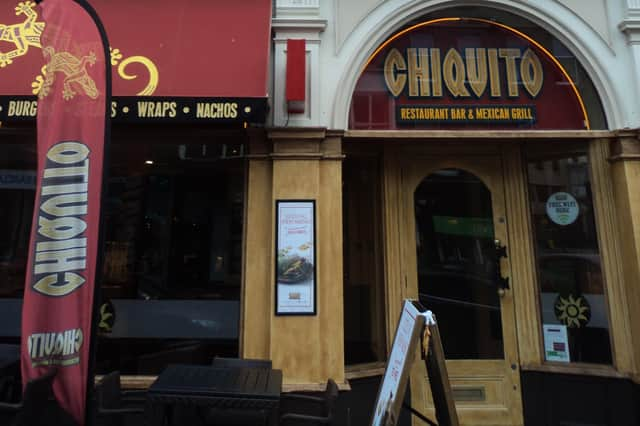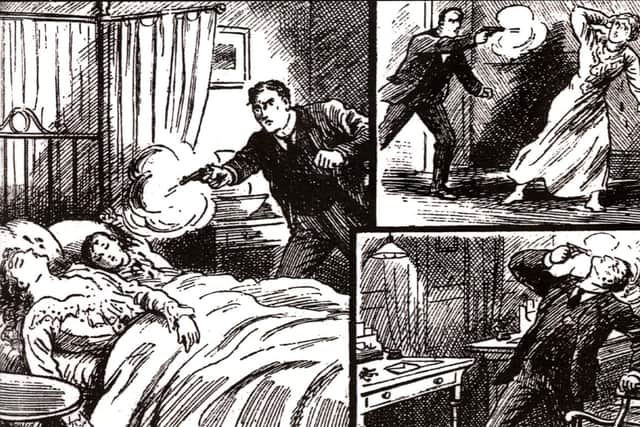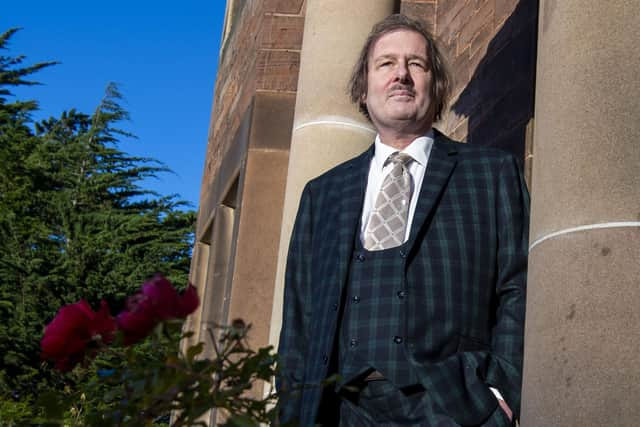Murder Houses of Edinburgh, by Jan Bondeson, part three – The second oldest murder house in the Capital


Alexander M’Millan was a native of County Monaghan in Ireland, born there in the early 1830s. He ran away from home as a young lad and lived with his grandfather in Lancashire before becoming cabin-boy; he ended up tramping up to Glasgow, where he changed his name to Alexander Milne and fell in with some very bad company. Escaping from the police, he found work in an Edinburgh printing office, but soon quarreled with the foreman and was discharged.
He took lodgings in Rose Street, where he fell in with some travelling Swedish hair-platers who found him useful as an interpreter. In return, they taught him their trade, and since there was a demand for hair-platers in the New Town at this time, things started looking up for young Milne.
Advertisement
Hide AdAdvertisement
Hide AdHe took apartments at 47 Cumberland Street, where he had his successful hairdressing salon. He married Ellen Lawson and went on to father three children: Helen Louisa, William Alexander and James Lawson. By early 1863, Milne had relocated into the small shop at 31A Frederick Street, consisting of two small rooms, with a front room and a kitchen in the basement below to house the entire family. By this time, the now 29-year-old Milne was a chronic alcoholic.


On January 7, the 28-year-old jeweler James Paterson, of 5 St James Square, sent his shop assistant George Graham to Milne to inquire about some hair mounts. Milne, who was sober and alert for a change, said that they were nearly done, but he asked that Mr Paterson should be sent to his shop, since he wanted to see him. Milne and Paterson had been good friends for some time, but when the jeweler came to his shop, Milne had purchased a sharp dagger.
He admitted Paterson, who said, ‘How are you today?’, and got the taciturn reply, ‘Just come in.’ All of a sudden, Milne assaulted Paterson in front of his two young sons who were in the back shop: he gave him a push down the stairs to the kitchen of the flat below, before bounding after him with the dagger.
The eight-year-old Helen Louisa was astounded when Paterson came running into the basement room with his umbrella underneath his arm shouting ‘I am stabbed!’ He made it all the way up the stairs, but collapsed in the street holding the railings, exclaiming ‘Oh! I am stabbed!’ and pointing at the left side of his chest. He never spoke again.
Advertisement
Hide AdAdvertisement
Hide AdThe chemist Bruce Allen, who happened to be passing by, saw Paterson collapse and helped him into Alexander Forrester’s baker’s shop at No 31. He saw Milne emerge from his own shop, saying ‘The fellow has been poisoning my wife and my children. I have got him in bed with my wife.’ Allen gave Milne a push back into his own shop, saying ‘Go into your shop, sir, and do not attempt to escape!’


When Constable John Stewart came to the scene, he found that Paterson was already dead; when he seized the dagger and took Milne into custody. After Milne had been removed to a cell at Calton Jail, he seemed calm and sober, and quite unconcerned about the ‘accident’ he had caused.
There was widespread curiosity throughout the New Town that a murder had been committed in one of its most fashionable streets. Throughout the day of the murder, and for weeks afterwards, crowds of people came to see the murder shop.
The trial of Alexander Milne for murdering John Paterson opened at the High Court of Edinburgh on February 7. George Graham described how he had gone to Milne’s shop and set up the meeting with Paterson. Ann Wilson, the landlady of the murdered man, said that she had advised Paterson not to go near Milne, who was an excitable and crazy-looking man who was very fond of strong drink. Milne’s little daughter gave evidence about what she had seen, as did the resourceful Bruce Allan, Constable Stewart and William Cowan, the lieutenant of police.
Advertisement
Hide AdAdvertisement
Hide AdThere was no doubt at all that the prisoner Milne had stabbed Paterson to death, but had he been sane at the time? The defence called a number of witnesses who described Milne’s strange behaviour in the weeks prior to the murder: he had been fearful of being robbed, thought his family were being systematically poisoned, and imagined Paterson was having an affair with his wife.
The doctors who had examined Milne agreed that he was not labouring under delirium tremens and not feigning insanity; instead, they suggested he had been under the influence of paranoid delusions when he committed the murder. The jury returned a majority verdict of guilty, albeit with a recommendation to mercy since three jurors had been of the opinion Milne had been insane.
Sentence of death was pronounced and the execution date set to March 4. There was widespread opposition to this harsh sentence. The Home Secretary came to the conclusion the recommendation of the prisoner to mercy by the jury was entitled to more than ordinary weight and that the sentence should be commuted to penal servitude for life.
When I first saw it in 2009, the murder shop at 31A Frederick Street was part of the Chiquito Mexican restaurant. It was still possible to see that there had once been two shops on the premises, although the door to Milne’s former shop had been replaced with a large window, the entrance to the restaurant being through the door to Forrester’s shop, on the floor of which Paterson had expired. The basement floor, where the murderer had eked out a miserable existence had long since been paved over.
Tomorrow: A Rose Street House of Horror
Advertisement
Hide AdAdvertisement
Hide AdThe Murder Houses of Edinburgh, by Jan Bondeson is now available here